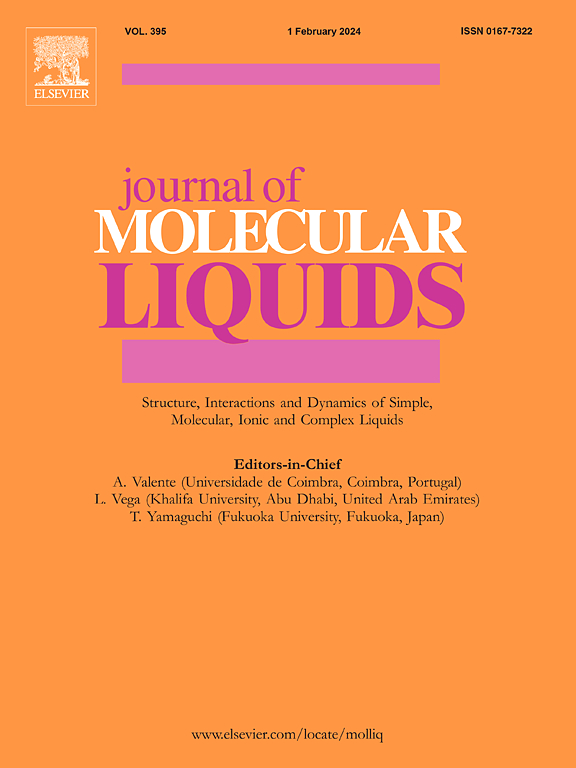Molecular scale insights into CO2 hydrate growth regulated by surfactant
IF 5.3
2区 化学
Q2 CHEMISTRY, PHYSICAL
引用次数: 0
Abstract
Carbon dioxide hydrate is an efficient technology for carbon dioxide capture and storage, and its growth is a complex process involving multiple phases and components. Typically, the nucleation and growth of hydrates require the introduction of surfactants to improve interfacial compatibility. In this study, we designed and synthesized two new surfactants (QC12PyBr and QAC12Et3Br), both deploying fluorescent group (quinoline) for the hydrophobic end. To enhance the weak interaction with H2O molecules, pyridine and triethylamine are introduced as the hydrophilic end with QC12PyBr and QAC12Et3Br respectively. This design endowed the surfactants with optical activity (UV illumination) while maintaining their original amphiphilic properties. The effects on hydrate growth are explored by molecular dynamics simulations, which provide molecular scale insights into CO2 hydrate growth regulated by surfactant from the perspectives of CO2 aggregation morphology, surfactant conformation, as well as weak intermolecular interactions, respectively. The results indicate that the spherical morphology with higher interface curvature of CO2 aggregation is more favorable for hydrate growth. DFT calculations show that the differences in intermolecular interactions between hydrophilic groups and H2O molecular lead to different surfactant spatial conformations at the gas–liquid interface. Additionally, a combination of simulation and experimental methods is employed to further verify the feasibility of the surfactants designed in this study, thus confirming that the synthesized surfactant possesses the ability to effectively regulate hydrate growth for CO2 storage while providing a new method for monitoring hydrate film growth based on the fluorescence activity.
求助全文
约1分钟内获得全文
求助全文
来源期刊

Journal of Molecular Liquids
化学-物理:原子、分子和化学物理
CiteScore
10.30
自引率
16.70%
发文量
2597
审稿时长
78 days
期刊介绍:
The journal includes papers in the following areas:
– Simple organic liquids and mixtures
– Ionic liquids
– Surfactant solutions (including micelles and vesicles) and liquid interfaces
– Colloidal solutions and nanoparticles
– Thermotropic and lyotropic liquid crystals
– Ferrofluids
– Water, aqueous solutions and other hydrogen-bonded liquids
– Lubricants, polymer solutions and melts
– Molten metals and salts
– Phase transitions and critical phenomena in liquids and confined fluids
– Self assembly in complex liquids.– Biomolecules in solution
The emphasis is on the molecular (or microscopic) understanding of particular liquids or liquid systems, especially concerning structure, dynamics and intermolecular forces. The experimental techniques used may include:
– Conventional spectroscopy (mid-IR and far-IR, Raman, NMR, etc.)
– Non-linear optics and time resolved spectroscopy (psec, fsec, asec, ISRS, etc.)
– Light scattering (Rayleigh, Brillouin, PCS, etc.)
– Dielectric relaxation
– X-ray and neutron scattering and diffraction.
Experimental studies, computer simulations (MD or MC) and analytical theory will be considered for publication; papers just reporting experimental results that do not contribute to the understanding of the fundamentals of molecular and ionic liquids will not be accepted. Only papers of a non-routine nature and advancing the field will be considered for publication.
 求助内容:
求助内容: 应助结果提醒方式:
应助结果提醒方式:


